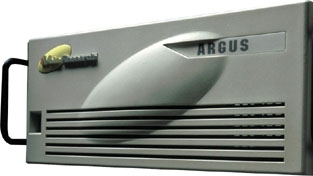Digital encoders

Be very reluctant to purchase a unit that is specifically designed for a narrow set of input parameters with no expansion capability.
The encoder — that magical silicon-filled device that makes the whole new ATV scheme of things work. To review, essentially all of the new television transmitter exciters look for the same input. To wit, a SMPTE-310M input for the MPEG-2, 19.39Mb/s Transport Layer signal. Some will accept two such streams and switch between them to allow switching between local and network signals with no change in the on-channel frequency. That little feature is important to avoid the loss of lock in receivers.
The problem arises in selecting the input du jour. The discussion has been raging for years about just how the incoming digital or analog video signal to the encoder should be configured. That is, how many scan lines, interlaced or progressive, scan rates, aspect ratios, etc. The various proponents are primarily divided between the computer camp, which sees advanced television systems as an extension of the Internet, and the movie crowd, which believes television should primarily be configured to replay Ben-Hur. Both sides make very convincing arguments and neither can really be considered to be wrong. The Federal Communications Commission has taken the same firm and helpful position that it did for stereo AM broadcasting — they have decided that the marketplace will be the determining factor.
As a result, multiple standards exist and will probably continue to exist for the foreseeable future. Various feeds may be 1080i, 720p, 480p, etc. The director of engineering is then forced to determine just what the configuration should be for the encoder to accommodate the local studio and one or more networks. In other words, this is not strictly an engineering choice. The choice may partly be made for the station by its network with the local production crew using the same or a different standard. This may be simple for many stations in the immediate future, because the network feed is used all of the time with only the insertion of local station breaks. That will probably continue until the station can start selling local spots on the DTV signal.
The Chief is then left in a quandary. Just what capability should be included in an encoder? The problem is complicated even further when the station has to determine if and/or when it will operate with high definition, standard definition, multiple standard definition, PSIP (more later) and a datastream. The obvious answer is to buy an encoder that does it all for all of the standards and formats with all of the additional channels. That will run the encoder up to about the same price as a small transmitter.
A more practical solution is to ensure that the encoder can be modified or expanded as time passes. In other words, be very reluctant to purchase a unit that is specifically designed for a narrow set of input parameters with no expansion capability. While the expandable versions are somewhat more expensive, it is much cheaper to plug in cards in the future than to trash the whole thing when a new signal source is added.
A secondary solution is to convert the new standard to the one currently in use at the station. Adequate systems are available to perform that little task but aren't a total cure. When such conversions are performed, the resultant picture may acquire problems that didn't exist previously. The reader is referred to John Luff's June 2001 article on HD conversion products. He does an excellent job of pointing out the problems that can occur which indicate that conversion, while practical, must be done carefully. In addition, the cost of the format conversion systems may well be more than would be necessary to modify the encoder. Luff also points out that conversion can cause the loss of information such as closed-captioning data, VITS and embedded audio.
The professional video industry's #1 source for news, trends and product and tech information. Sign up below.
An additional problem is the use of the Program and System Information Protocol (PSIP), which has been found to be highly desirable to viewers. That also was covered in June 2001 by Arthur Allison. For ATV planning, that issue of the magazine should be read carefully. The configuration of an encoder should permit the easy insertion of the PSIP signal without interference between it and other signals.
Some encoders can operate as a simple system and are field upgradeable as future enhancements become available. It may well be advisable to buy at least the necessary frames and wiring for the more complete system initially rather than face the cost when the front office calls down to change the image formats. In any case, the blank shelf space can be used to store your old magazines. No one ever looks in there anyway.
It is difficult, in preparing this column, to avoid missing products that should be included. When discussing manufacturers with a solution to the N+1 combining problem, Micro Communications was omitted due to author error. In fact, the combiner manufactured by that company was a pick of the show during NAB2000.
This was properly brought to the attention of the author by Sam Matthews of MCI, who also brought up a point concerning the use of a small temporary antenna during the DTV conversion period. If tower loading will permit, the temporary antenna could be left on the tower to serve as a standby system when normal operation is shifted to a new permanent antenna. There are many station engineers who will attest to the value of such a system when a fault occurs in the main antenna or transmission line.
Don Markley is president of D.L. Markley and Associates, Peoria, IL.
